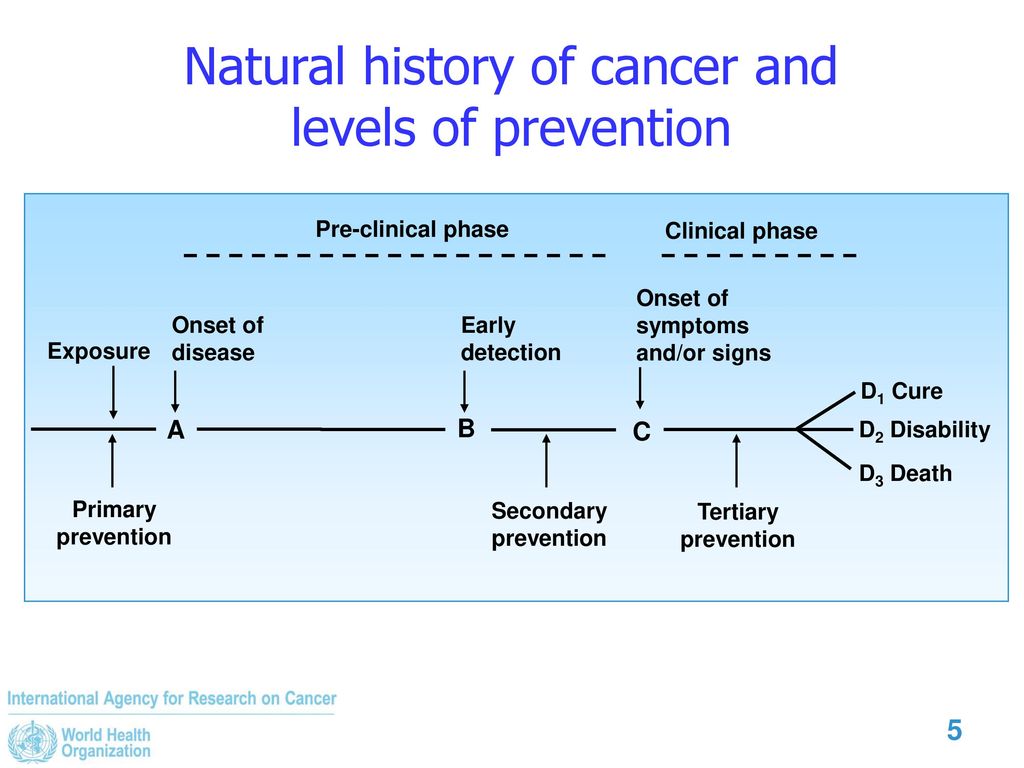Cancer prevention
这几天,所里有个关于cancer prevention的大会,分别从癌症预防的三个不同层次来做专题报告。于是乎就给自己科普了一下关于这三个层次的具体内容(毕竟觉得自己这么长时间了还是个小白)。
Nearly all important issues in cancer prevention are linked to the natural history of the disease ‘cancer’, which can be summarized as shown in the figure.

Point A indicates the biological onset of the disease and the start of the pre-clinical phase. This may be the point at which an irreversible set of events (e.g., gene mutation) takes place. As a result of progression of the disease, symptoms and/or signs appear that bring the patient to medical attention and diagnosis at point C. This is the end of the pre-clinical phase, which is the period from A to C, and the beginning of the clinical phase of the natural history. The disease may then progress to cure (D1), to permanent illness and disability (D2) or to death (D3).
There are various levels of prevention:
-
Primary prevention is prevention of disease by reducing exposure of individuals to risk factors or by increasing their resistance to them, and thus avoiding the occurrence of event A.
- Secondary prevention (applied during the pre-clinical phase) is the early detection and treatment of disease. Screening activities are an important component of secondary prevention. In the above figure, point B indicates the point in time at which the disease is first detectable by an appropriate screening test. For example, it might refer to the time at which a cancer mass reaches the minimum size that can be seen by X-ray examination. Thus, the distance from point B to C represents the ‘detectable pre-clinical phase’. The location of point B varies markedly from one individual to another, and also depends on the screening technique used.
- Tertiary prevention (appropriate in the clinical phase) is the use of treatment and rehabilitation programmes to improve the outcome of illness among affected individuals.
